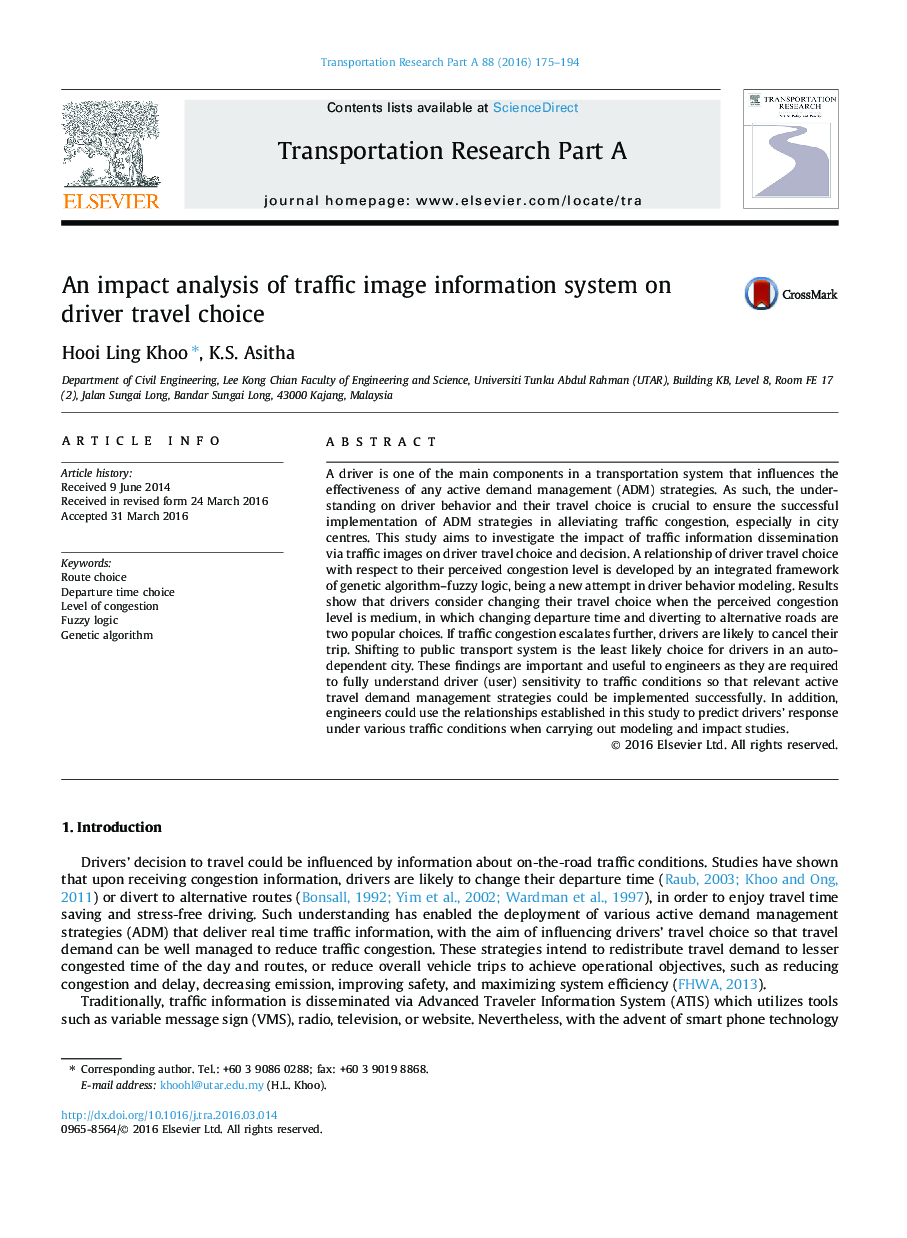| Article ID | Journal | Published Year | Pages | File Type |
|---|---|---|---|---|
| 6780908 | Transportation Research Part A: Policy and Practice | 2016 | 20 Pages |
Abstract
A driver is one of the main components in a transportation system that influences the effectiveness of any active demand management (ADM) strategies. As such, the understanding on driver behavior and their travel choice is crucial to ensure the successful implementation of ADM strategies in alleviating traffic congestion, especially in city centres. This study aims to investigate the impact of traffic information dissemination via traffic images on driver travel choice and decision. A relationship of driver travel choice with respect to their perceived congestion level is developed by an integrated framework of genetic algorithm-fuzzy logic, being a new attempt in driver behavior modeling. Results show that drivers consider changing their travel choice when the perceived congestion level is medium, in which changing departure time and diverting to alternative roads are two popular choices. If traffic congestion escalates further, drivers are likely to cancel their trip. Shifting to public transport system is the least likely choice for drivers in an auto-dependent city. These findings are important and useful to engineers as they are required to fully understand driver (user) sensitivity to traffic conditions so that relevant active travel demand management strategies could be implemented successfully. In addition, engineers could use the relationships established in this study to predict drivers' response under various traffic conditions when carrying out modeling and impact studies.
Related Topics
Physical Sciences and Engineering
Engineering
Civil and Structural Engineering
Authors
Hooi Ling Khoo, K.S. Asitha,
